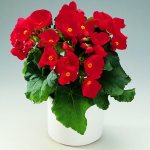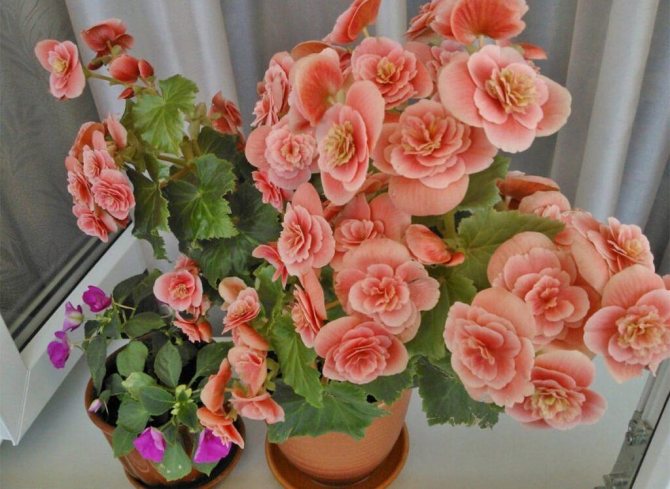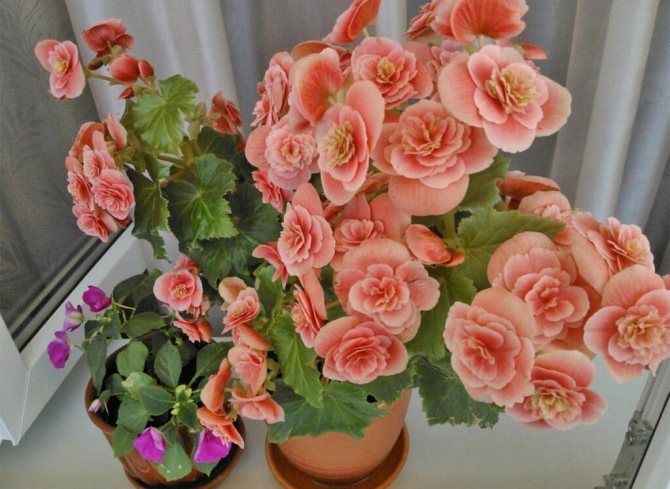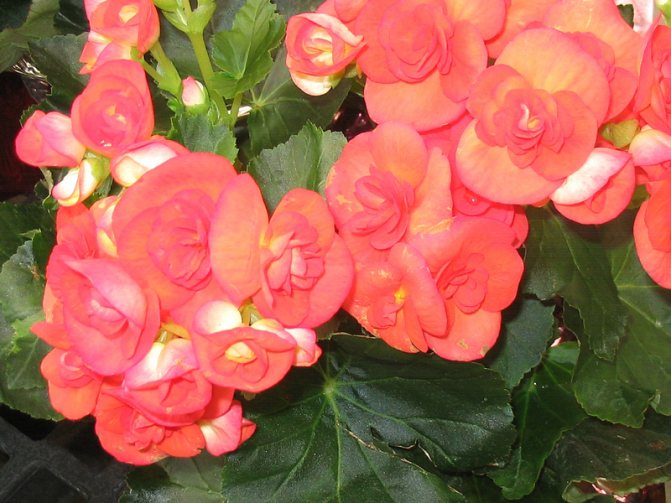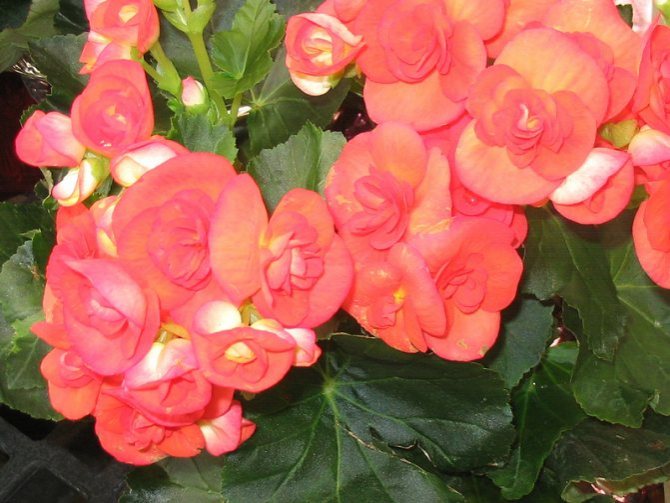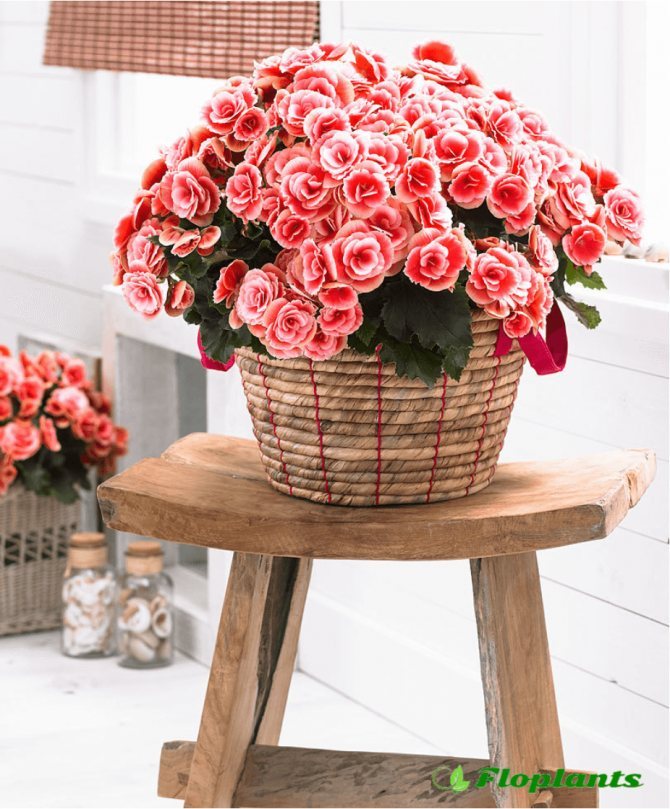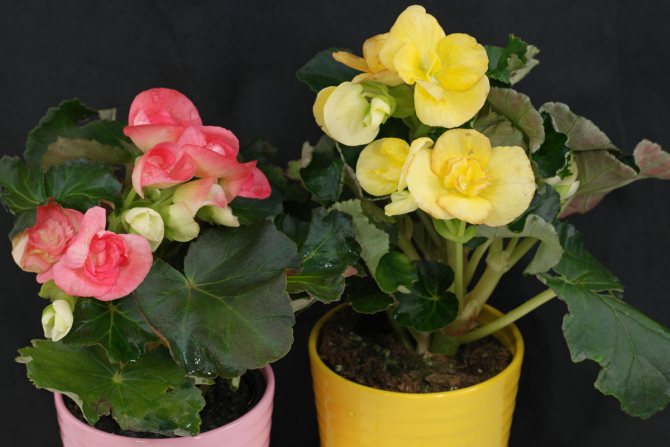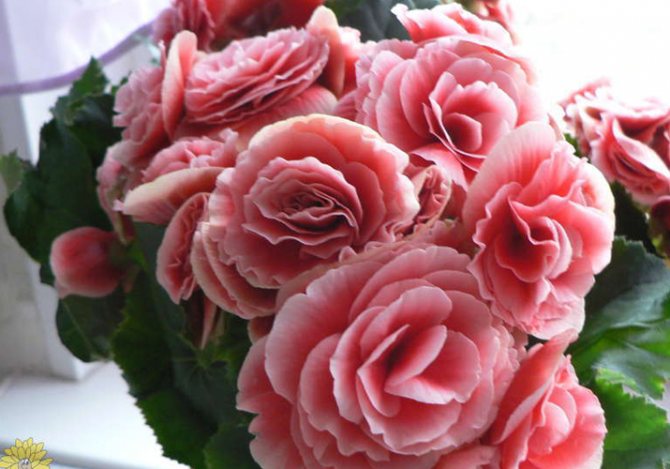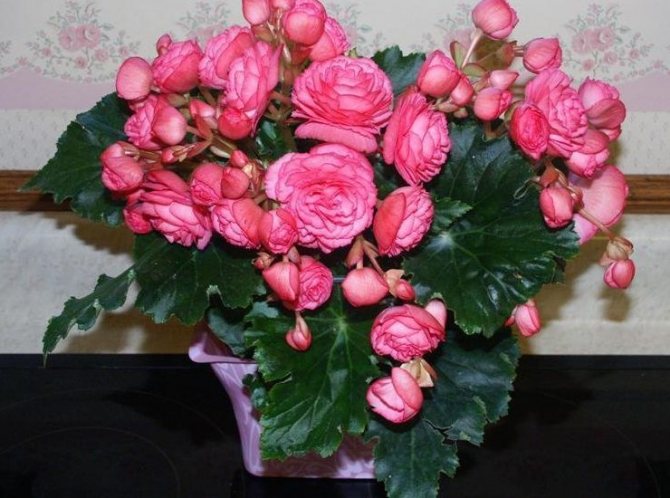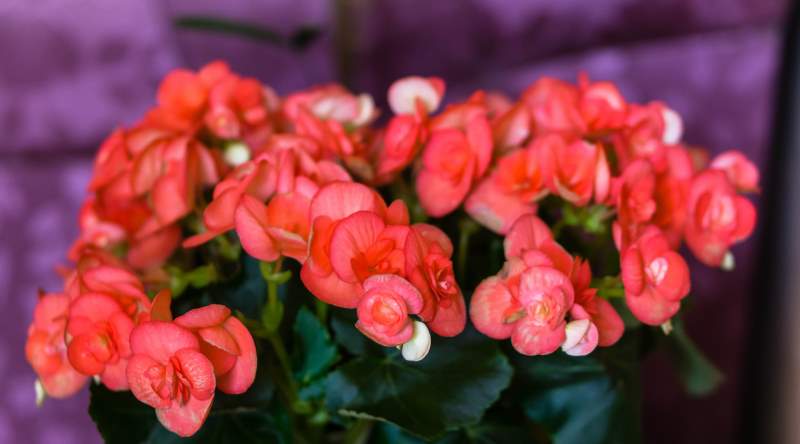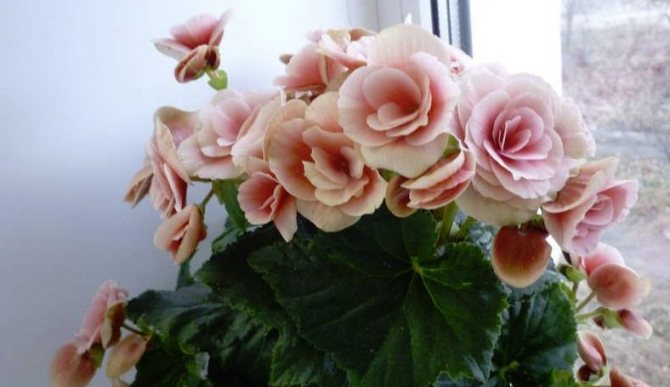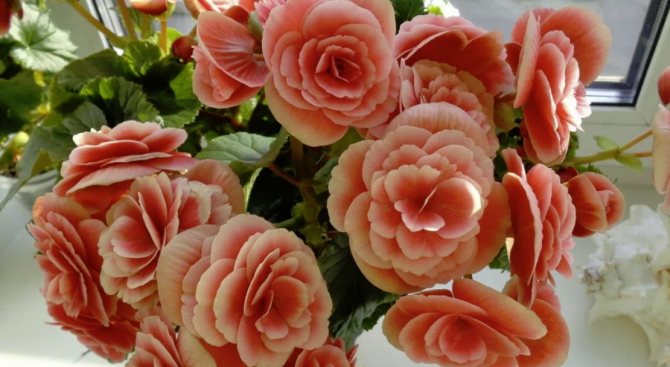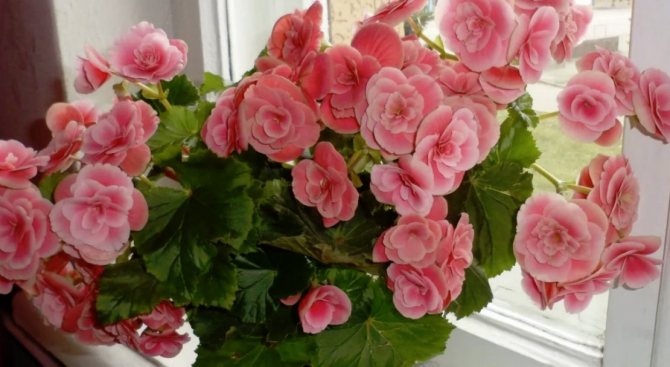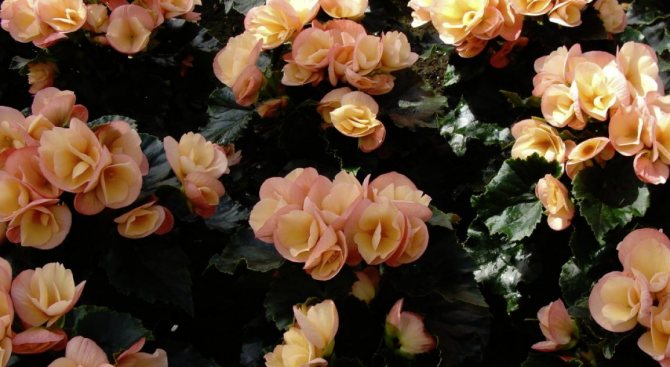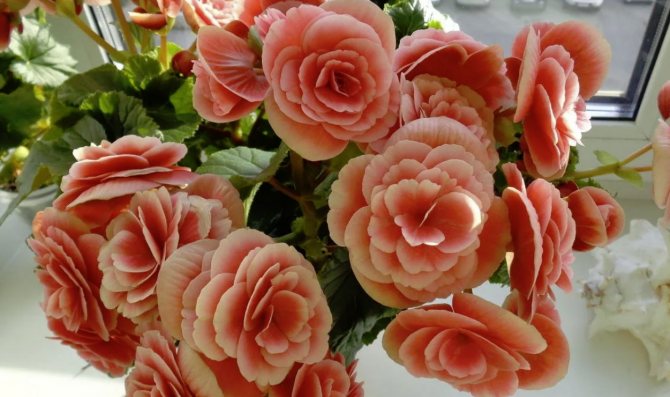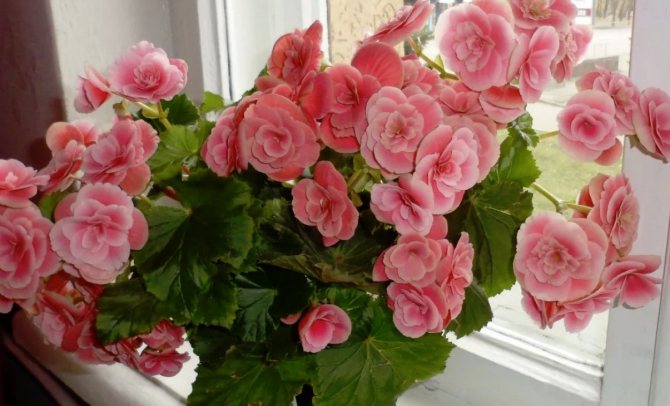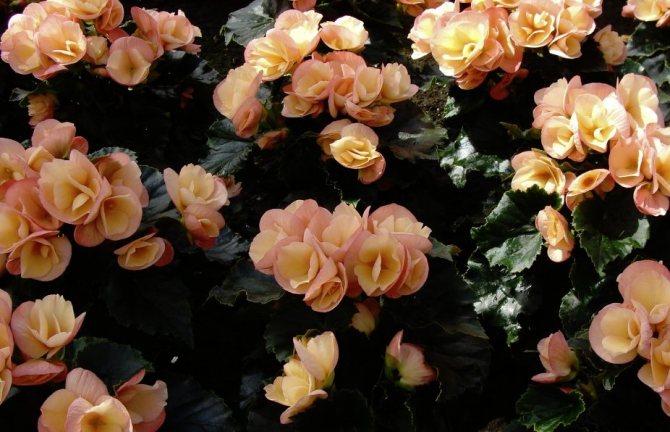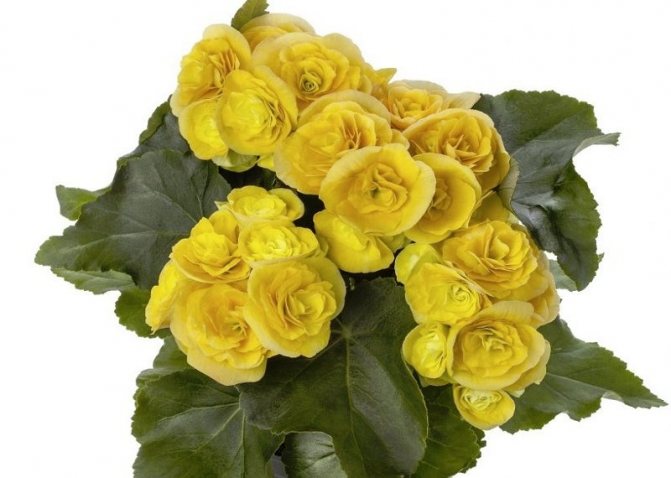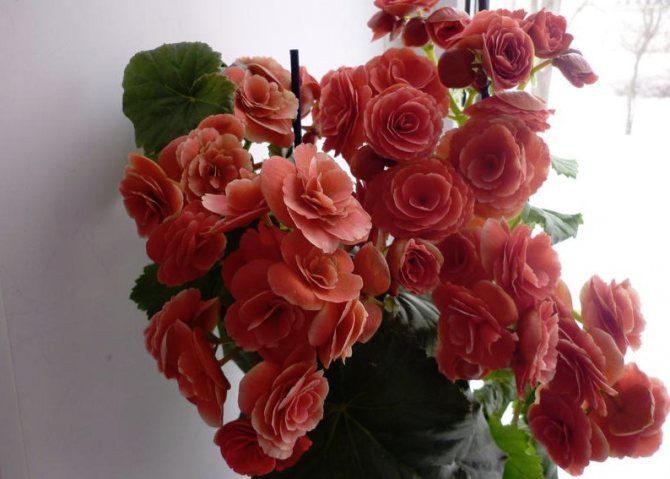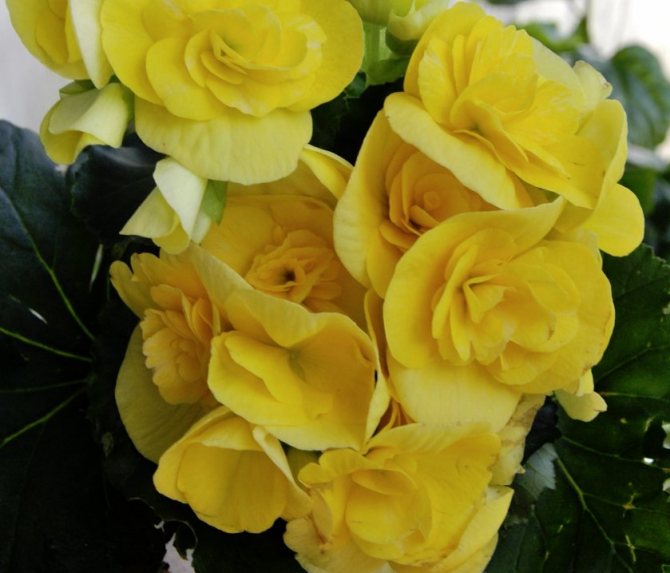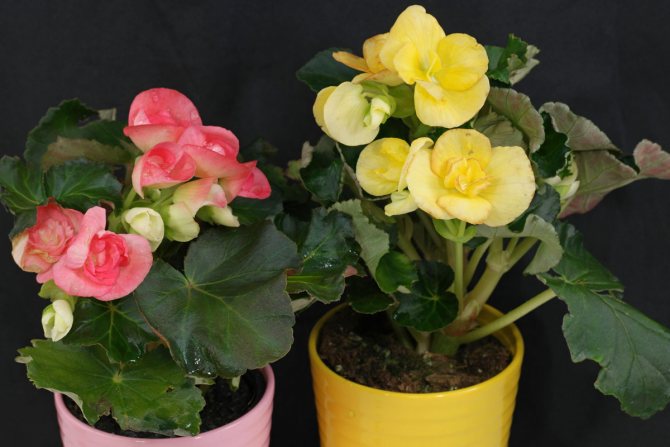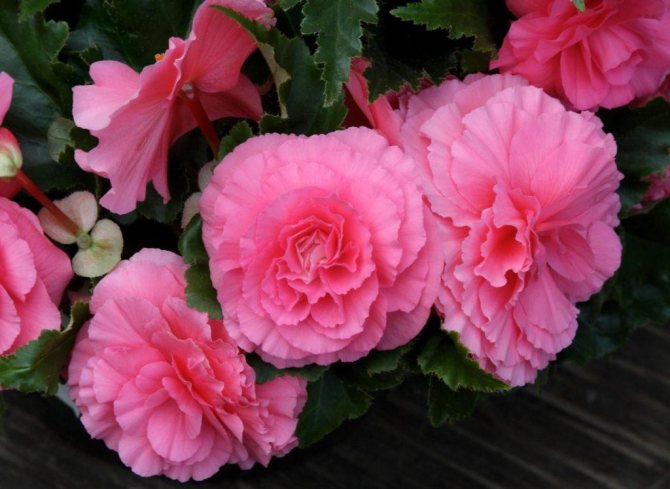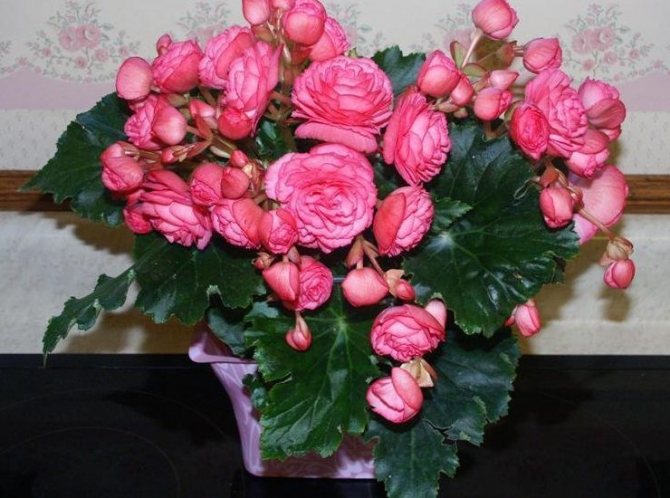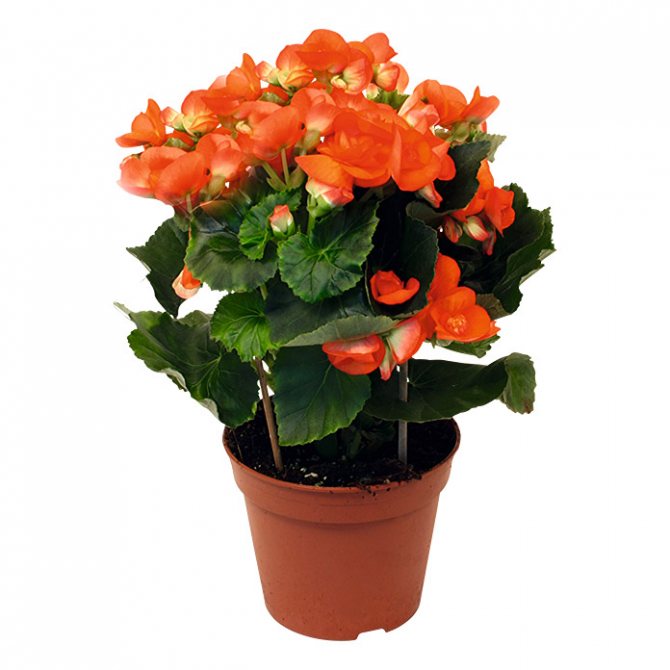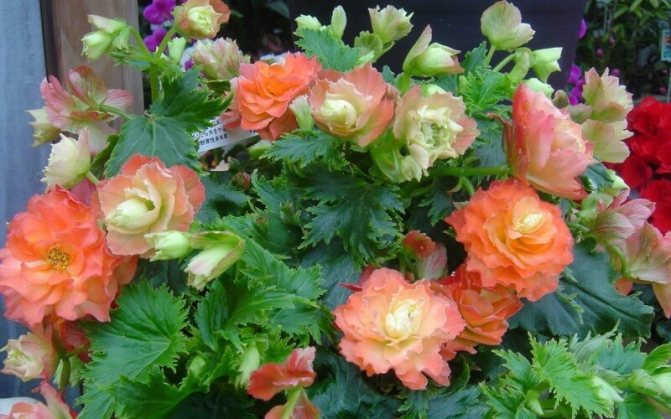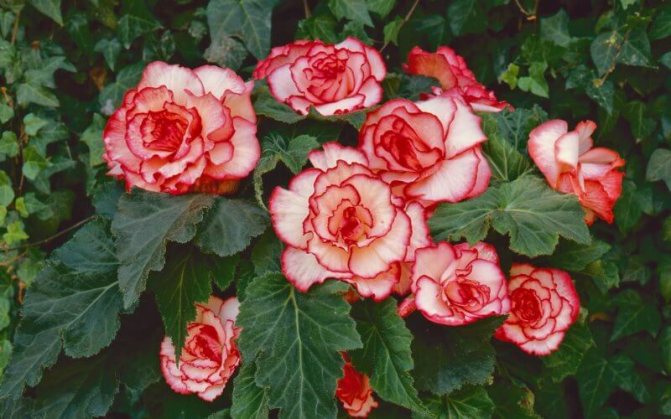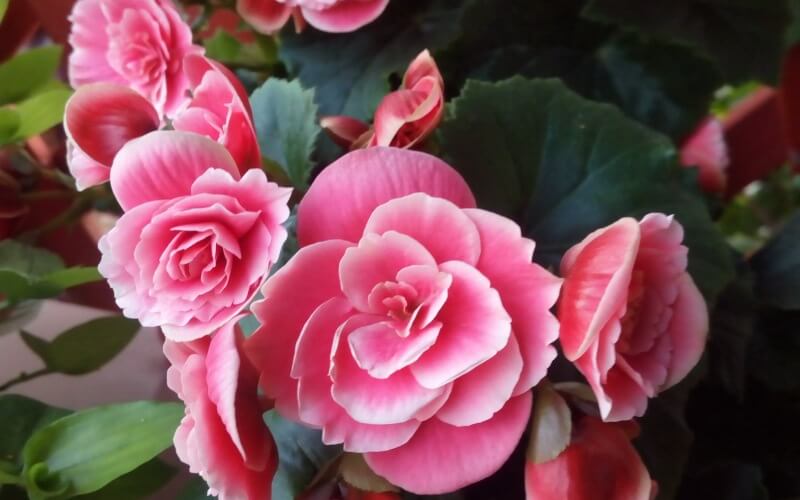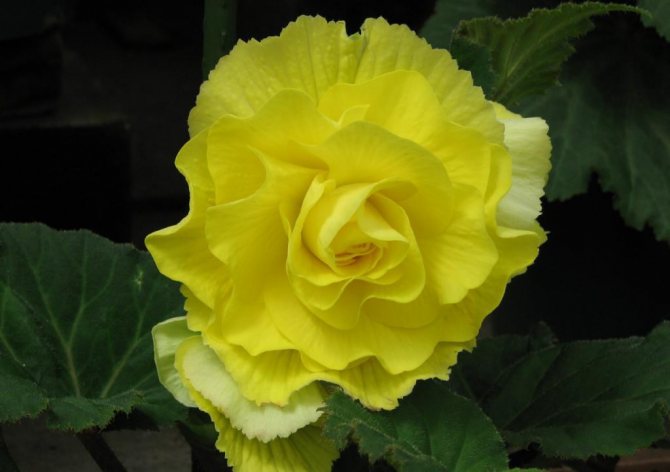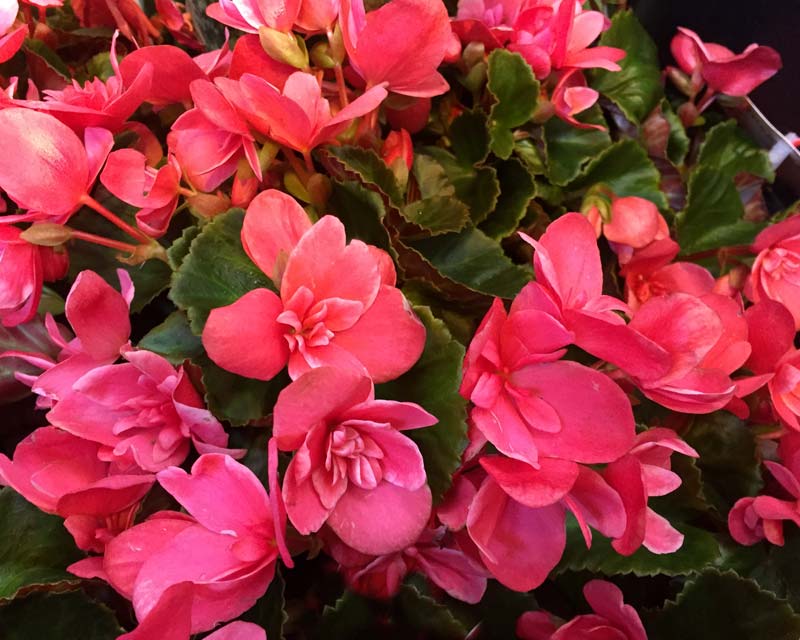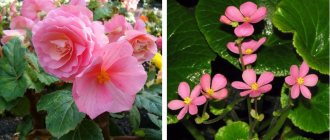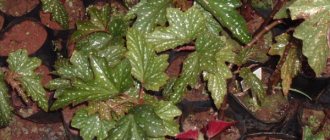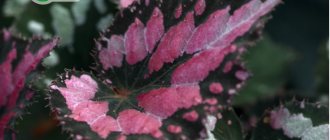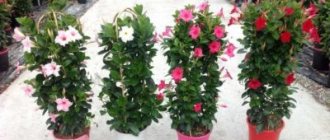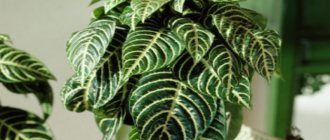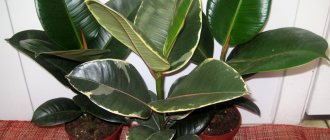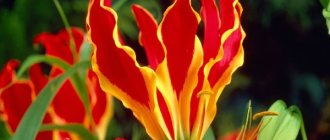The history of growing begonia Elatior and signs
This begonia variety belongs to the hybrids obtained by crossing the Socotran and tuberous varieties, with which the plant is often confused.
There are signs that begonias bring prosperity and prosperity to the house. In addition, the flower absorbs all negative energy that enters the house from the outside with strangers and objects.
According to the signs, begonia is of great importance for those who are in business. So, a flower not only gives confidence to its owner, but also improves intuitive abilities and flair. The plant will help you avoid failed deals and failures at work. Begonia bloom accompanies business success and prosperity.
In love affairs, begonia will also help - with its help it is easy to find a soul mate. It is recommended to put a plant with red flowering in the bedroom - it will help remove all quarrels from relationships and improve the sex life of partners. The sudden flowering of the plant speaks of the upcoming replenishment of the family. But white and pink begonias are best placed in the hallway to improve the aura and family relationships.
Temperature
Homemade begonia elatior needs the right ambient temperature. This flower is quite thermophilic. The plant feels especially well at a temperature of about 20 ° C. It can be allowed to decrease to 18 ° C. This is quite enough for begonia to develop harmoniously. In this case, its flowering will be abundant.
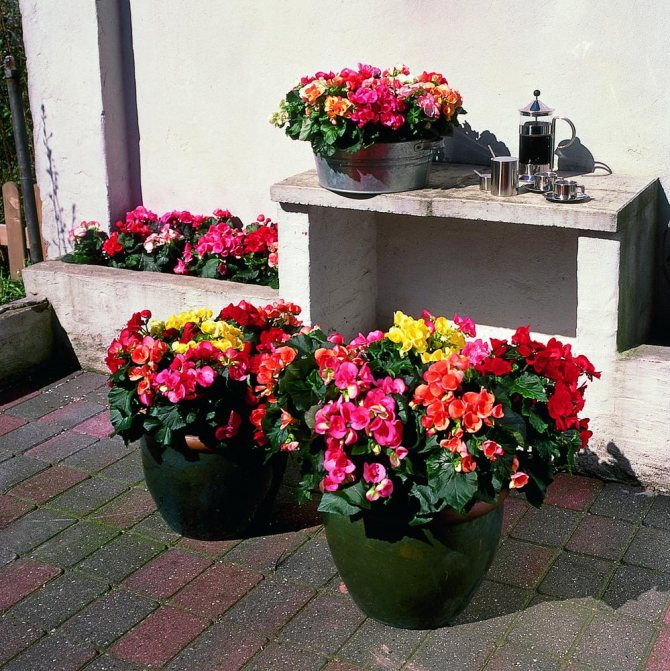
If the temperature drops even lower, this will lead to sad consequences. Begonia stops growing. Its buds and even leaves begin to fall off rapidly. The appearance of the plant becomes unattractive. In this state, the flower begins to ache. Especially often stem and root rot develops on it.
It is also worth considering that drafts are categorically contraindicated for this hybrid. He also does not tolerate sudden changes in temperature. If the room needs to be ventilated, the flower must be protected from the effects of cold air currents. In summer, the plant does well.
Begonia characteristics and species diversity
Begonias Elatior belong to the genus Begonias. These are widespread hybrids, the second name of which is Winter Begonia. This variety is represented by perennial herbaceous plants that reach 40 cm in height. The stem of the plant is thick and fleshy, the leaves are alternately arranged on it.
Each leaf reaches 10 cm in length and is shaped like a heart, with wavy edges and a long petiole that attaches to the stem. The upper part of the leaf has a bright green color and a glossy surface, while the inside is characterized by a light green tint, a rough matte surface and prominent veins.
The bright and abundant bloom of begonias looks gorgeous against the background of glossy rich green leaves. The diameter of the flowers reaches 6 cm, and the buds themselves are collected in lush inflorescences on a high stem, thanks to which it is clearly visible above the surface of the leaves. The plant begins to bloom in mid-autumn or early winter and lasts for 6 months.
All varieties of this begonia are classified by stem height. So, there are tall, medium-sized and low-growing flowers.Tall ones reach 40 cm in height and more, medium-sized ones on average have a height of 30-35 cm, and undersized ones - up to 20-25 cm.
Tall varieties
One of the most popular varieties is Schwabenland, which differs from other species with small red buds and lush inflorescences.
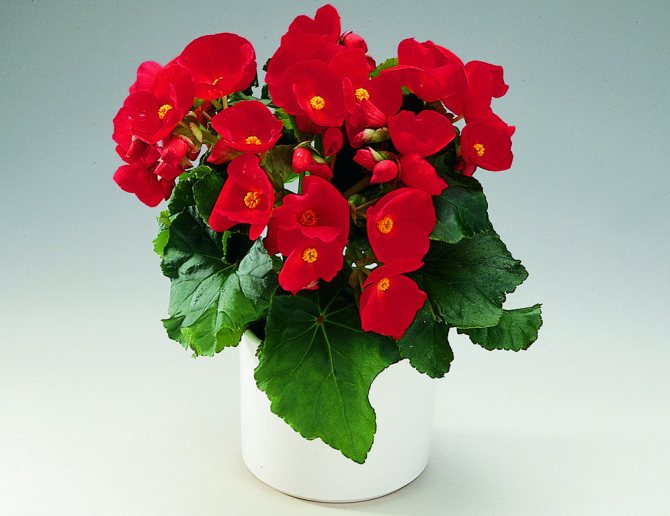

Schwabenland
The Renaissance cultivar cannot be overlooked due to its terry, lush large orange-red leaves with wavy edges.
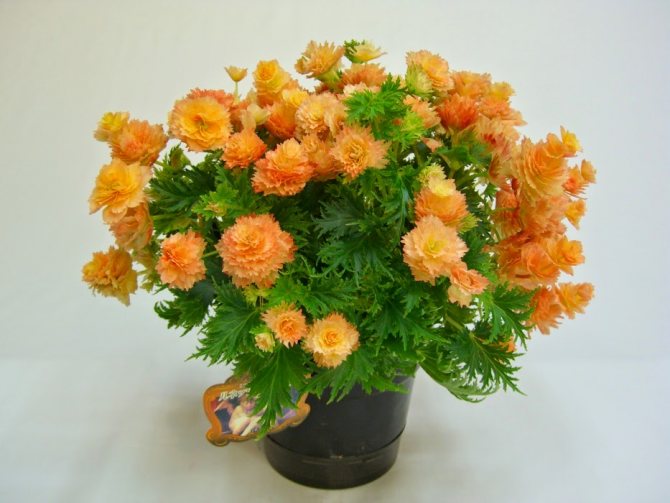

Renaissance
Louise flowers attract attention with large beige flowers with a pink tint.
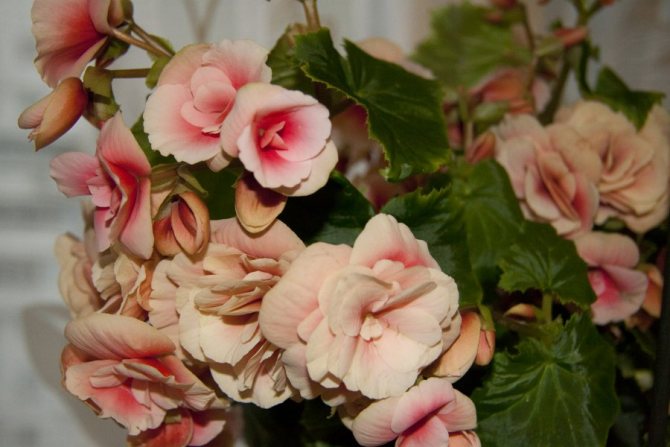

Louise
Medium-sized
Annebell is a medium-sized variety that mesmerizes with its semi-double pink bloom.
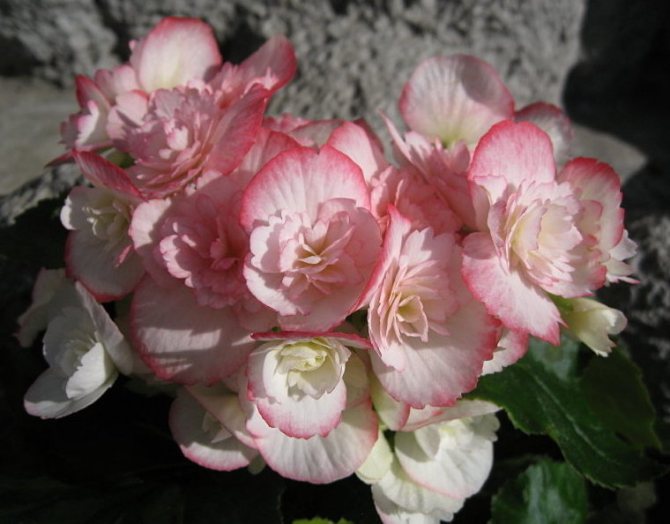

Annebell
Goldfinger has large lush double flowers in delicate shades, most often beige and pink.
Bellona deserves attention thanks to its large double red buds.
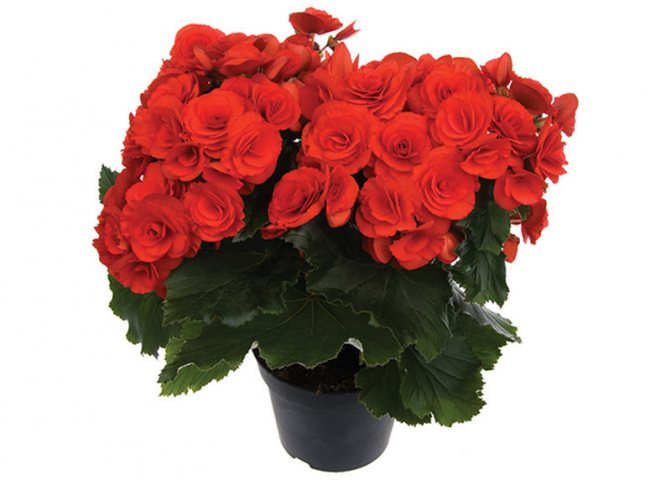

Bellona
Undersized
The undersized Piccora variety compares favorably with others due to its bright pink double inflorescences.
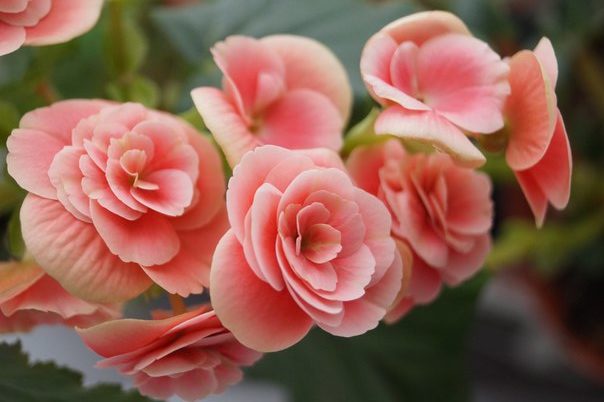

Piccora
Rosa, unlike the previous one, has a dark pink bloom.
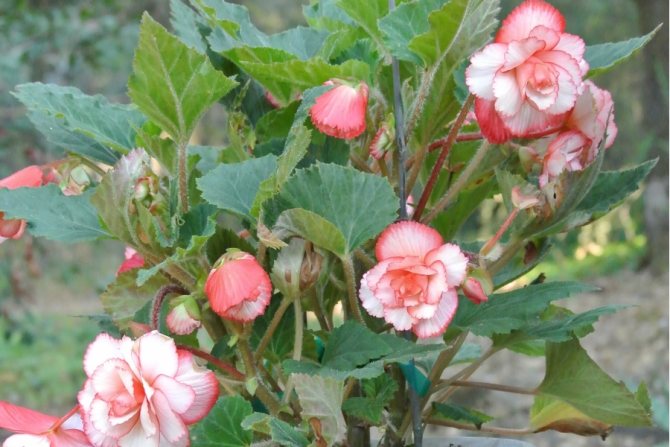

Rosa
Flowers of the Scharlach variety have a rich orange color with a red tint.
Which pot to choose?
Due to the peculiarities of the root system of Elatior begonia, a large pot is not required. It is desirable that the height be approximately equal to the width of the pot. The material the pot is made of doesn't matter. What kind of flowerpot - made of plastic, ceramics or clay will fit into the interior, get this one.
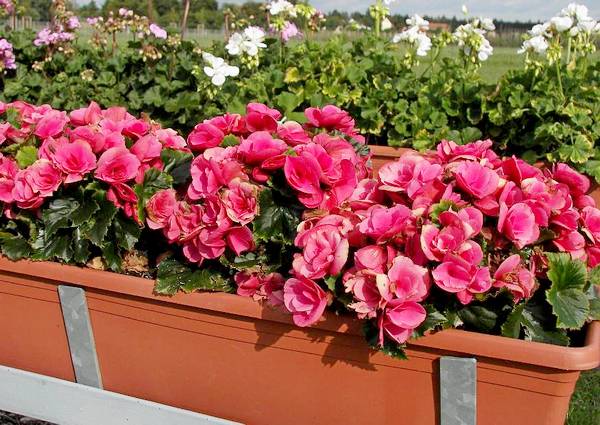

The main criterion should be size... The root system of Elatior is small, it takes time to fill the space of the pot with roots, so it is not recommended to immediately plant the sprouts in large pots.
For the first pot, a planter of 8-10 cm is suitable.Each next pot with a planned transplant should be 1/3 larger than the previous one. Drainage holes are required.
Growing begonias and home care
Growing begonias is a very painstaking and time-consuming business, and the flowers are quite finicky to care for. So, even the slightest changes in conditions can provoke growth retardation and plant disease.
The soil
Easy access to the soil of air and water is considered an important condition for begonias. A drainage layer of small pebbles is always laid out on the bottom of the pot. In addition, the substrate must be nutritious and contain all organic matter. The soil for begonias can be purchased ready-made.
Note!
For self-preparation of the substrate, it is necessary to mix deciduous and peat soil, humus type soil and part of the sand - it should be 2 times less than the earth.
Watering and feeding
Watering the begonias should not be excessive. The main rule for growing these flowers is to give the substrate time to dry. Experts recommend watering when the surface layer is completely dry, which can be determined with a toothpick immersed in the soil. Stagnant water in a pot or constantly wet soil can cause rotting of the root and aerial parts, which will lead to the death of the flower.
In the cold season, watering is reduced. It is necessary to water only with filtered water, since the running water is too hard. Also in the spring and summer in the evening, the flower is sprayed with a small amount of warm water.
In top dressing, experts do not recommend the use of fertilizers with a high nitrogen content, since it contributes to the accumulation of water in the already fleshy stem, which quickly leads to rotting of the flower. In addition to the stem, the rest of the plant also suffers. So, leaf petioles also become watery and brittle, buds and leaves become dull and lose their elasticity.
The plant is prone to rot disease. That is why it is worth giving preference to mineral fertilizers.It is necessary to feed this species once a week during the period of active growth and flowering. The standard single dose of fertilizer, which is written on the package, must be divided by 2, since the flower is very sensitive to the action of feeding.
Light and temperature
One of the features of begonias is that direct sunlight negatively affects the growth of the plant. Exposure to direct sunlight outdoors will quickly cause burns to leaves and petals. Also, direct rays can provoke a decrease in the size of the petals, which will make the inflorescences smaller in size.
Important!
Despite the fact that the more light a plant receives, the more abundantly it blooms, this can lead to a decrease in the size of the inflorescences themselves. It is for this reason that light must be diffused. Experts recommend putting begonias on the windows of the western and eastern parts of the house. In the summertime, it is not recommended to expose the flower to the street due to the excessive amount of sunlight.
Begonia belongs to thermophilic flowers, therefore the temperature of its content should not be less than 18-20 degrees. In addition, it is not recommended to place the pot in drafts and in cool places. Low temperature and its sharp drops can provoke rotting of the stem and root system, as well as leaf fall.
Diseases, pests and control of them
Most often, such diseases of begonias can develop, which are directly related to improper flower care. The appearance of rot and fungal lesions, which look like rough or covered with a coating, limited areas with fungus or rot of different colors. Such diseases appear when there is an excessive amount of water both in the soil and in the air. Low temperatures can also provoke them.
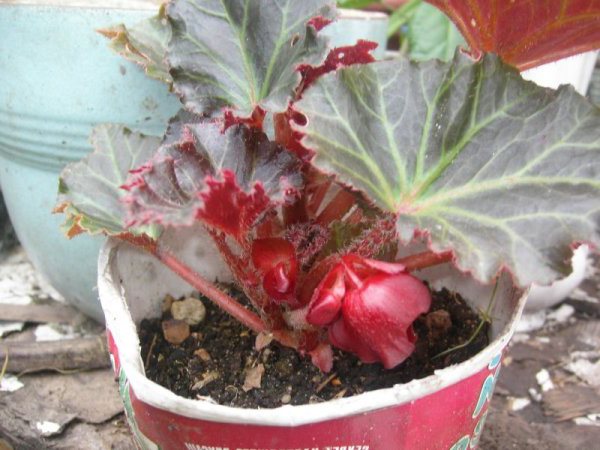

Falling flowers in begonia
Falling flowers, blackening and drying of the edges of the leaves may indicate insufficient watering and drought. Also, begonias often develop burns on the leaves due to prolonged exposure to direct sunlight. For the treatment of diseases, it is necessary to optimize the growing conditions for flowers and treat them with fungicides in cases of fungal diseases.
The most common parasites are mites, aphids and mealybugs. You can fight them with the help of insecticides, as well as mechanical treatment of leaves and damaged parts with a cotton roll moistened with dichlorvos. In addition, before treatment, the damaged parts of the plants are necessarily cut off and treated with crushed charcoal.
Growing problems
- With low air humidity and poor watering, the flower can shed its leaves. To solve the problem, change the conditions of the flower.
- With high humidity and coolness in the room, mold appears on the begonia flowers. To get rid of it, you need to remove the mold, and spray the bush with a special agent.
- With a lack of light, the leaves become pale, and also lose their decorative effect. To solve this problem, add additional lighting for the flowerpot.
- If the air in the apartment is too dry, the plant may become covered with powdery mildew. If white bloom is found on foliage and stems, treat the bush with sulfur or fungicides.
Home care for begonia Elatior
In addition to home care, you must be able to provide proper care during the period of plant adaptation to a new place, at rest and in winter.
After the purchase
First of all, even in the store, it is necessary to inspect the flower for integrity and the presence of parasites and diseases, since sometimes sick or infected plants can be sold. At home, you need to choose the location of the flower and provide it with all the necessary conditions for growth.
Remember!
The period of adaptation of a plant to a new place of residence can last up to 2 weeks, and during this time the begonia can wilt a little and look stunted. This takes place immediately after adaptation.The first few days, the flower does not need to be watered and transplanted into a new pot.
After flowering
After flowering, experts recommend first of all to prune the inflorescences. It is also necessary to stop fertilizing. Begonia stops blooming in mid to late summer and enters a dormant period. At this time, you also need to reduce watering and allow the flower to recuperate.
In winter
In winter, not only the frequency of watering is significantly reduced, but also the amount of water itself. The plant is not fertilized in the winter. The flower does not require additional lighting. In winter, it is necessary to carefully monitor the temperature regime, since the flower does not tolerate temperature fluctuations and cold air currents.
Before the beginning of winter, it is necessary to prune the plant and leave cuttings 7-10 cm long so that the flower does not lose its shape. In late winter and early spring, before a period of active growth, it is recommended to add growth stimulants to the substrate in order to obtain abundant flowering in the future.
Care Reviews
According to reviews, begonia elatior is a capricious plant. She is demanding on growing conditions. Reacts negatively to any changes. Also, the plant does not tolerate stressful situations. Therefore, the rules for caring for this hybrid need to be considered in detail. Errors in this process cannot be allowed.
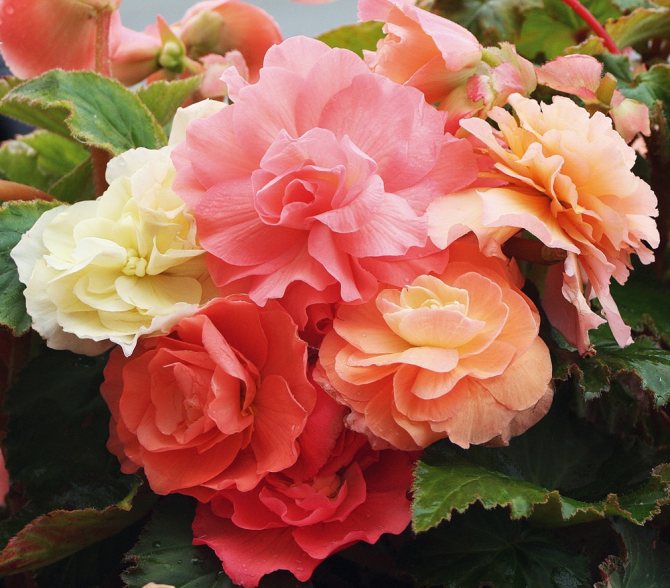

The efforts of the grower are rewarded with interest when begonia begins to bloom. This sight cannot be described in words. Some varieties resemble a real bouquet in a pot. Many growers claim that begonias can be given for celebrations instead of the usual bouquet of cut flowers. Such a gift evokes a lot of positive emotions. At the same time, begonia will be able to bloom for a long time, delighting its owners.
Almost all varieties are demanding on lighting and room temperature. They need to be properly looked after, providing the plants with everything they need. The transplant process requires special attention. The plant does not like such interventions. Therefore, it is important to do all the actions correctly.
How to propagate and transplant a flower at home
In order for the plant to bloom and grow profusely, it is necessary to be able to transplant it correctly, select a pot and propagate it.
Pot selection
First of all, you need to pay attention to the size of the pot. So, for young seedlings, it should be 8-10 cm in height, and for each further transplant, its size should increase by a third of the previous one. So the container will not be too spacious, which can lead to rotting of the root system. Also, there must be several drainage holes in the pot. The shape of the pot can be any.
Advice!
Experts recommend giving preference only to ceramic pots, as they are considered the safest.
Transfer
First of all, you need to prepare a new pot for transplanting. The container must be thoroughly washed in hot water. Ceramic are treated with boiling water and soaked in water for a day. At the bottom of the container, a layer of charcoal is initially laid out, on top of which a drainage layer of several centimeters is laid out.
Begonia must be watered abundantly and left for an hour. After that, the flower must be carefully removed from the pot and carefully examined for damage. The damaged parts are cut off, and the root system can be treated with potassium permanganate in order to prevent the growth of microorganisms.
The plant is placed in a new pot and covered with substrate. The top layer must be fluffed in order to increase air permeability. The neck of the plant should not be underground.
Reproduction
Begonia is propagated by cuttings of leaves or stems. To do this, cut off 10-12 cm of the stem or simply tear off a leaf.
A young plant is rooted in water, to which a few tablets of activated carbon are added to prevent microbial contamination. The shoot is kept in the same conditions as a mature flower. A rooted young plant is planted in a pot up to 10 cm high.
Reproduction
It is not difficult to propagate this plant, since there are several ways for this at once in the form:
- cuttings;
- division of the mother bush;
- reproduction by seeds.
Cuttings
The best time for this type of begonia breeding is spring or early summer.
The process proceeds as follows:
- The largest and best looking leaves are selected on the plant.
- The selected leaves are cut with a sharp knife, leaving petioles no shorter than 5 cm on them.
- Then the leaves with petioles are planted in a special soil mixture prepared from 1 peat part and 3 sand parts. During planting, care should be taken that after planting the surface of the leaf does not touch the soil.
- A container with planted leaves is placed in a dark place for 2 months.
- Begonias reproduce in a similar way by means of cuttings taken from the stems. In this case, the size of the cuttings should not be less than 7 cm. A necessary condition is to plant them in the soil immediately after cutting.
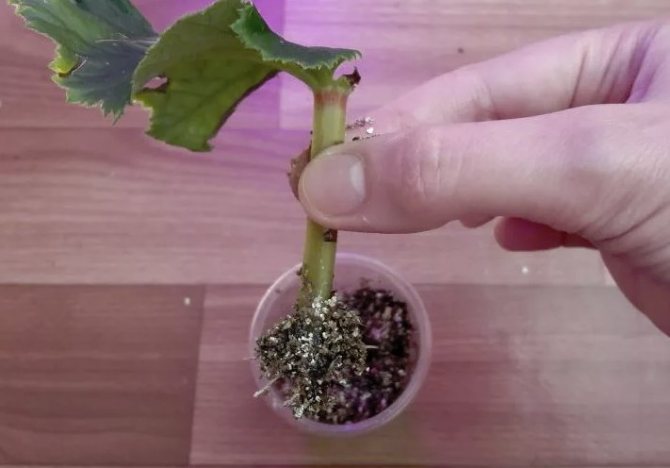

Seeds
Growing begonia elator using seeds is much more difficult. The problem is that this plant, being a hybrid, produces very unstable seed material. The optimal time for planting seeds is in late February or early March.
To do this, you must:
- Mix seed with sand.
- Prepare a special soil, for which the peat and sandy parts are mixed with 2 earthen parts.
- Then place the container with soil on a pallet filled with heated water. After the soil is completely moistened and cooled to the optimum temperature, sow seeds in it mixed with sand.
- Sprinkle the sown soil on top with water using a sprayer, then cover with glass or film and stand at temperatures up to + 25 ° C and 14-hour lighting until the first shoots appear, which usually hatch after about a month.
- A week after that, plant the sprouts in cups, and after a couple of months - in permanent containers in the form of pots.
Important! If purchased seeds are used for planting, then before use they should be treated with a 1% solution of potassium permanganate for at least half an hour.
By dividing the mother bush
This operation is carried out in the spring in such a way that when dividing the mother bush, all the children are with a bud and a sprout. Places of cuts should be sprinkled with crushed charcoal, and the roots should preferably be treated with Kornevin.
Common questions
Are black spots on the back of the leaves a fungus?
Yes, small black spots are a sign of a fungal disease. For its treatment, it is necessary to treat the flower with a fungicide and normalize the growing conditions. The damaged parts are removed.
What drug is better for rooting cuttings?
To stimulate rooting, it is recommended to use Kornevin.
Begonia dropped flowers and buds - what does this mean?
This is due to improper care, namely, excess or insufficient watering.
Can begonias be pruned immediately after flowering?
Dried parts of the plant are removed immediately after flowering.
The soil
Home begonia elatior grows in special soil. It can be purchased from a specialist store. This soil is intended exclusively for begonias. The soil must be loose. For this, it must include vermiculite. Perlite is also often used for this.
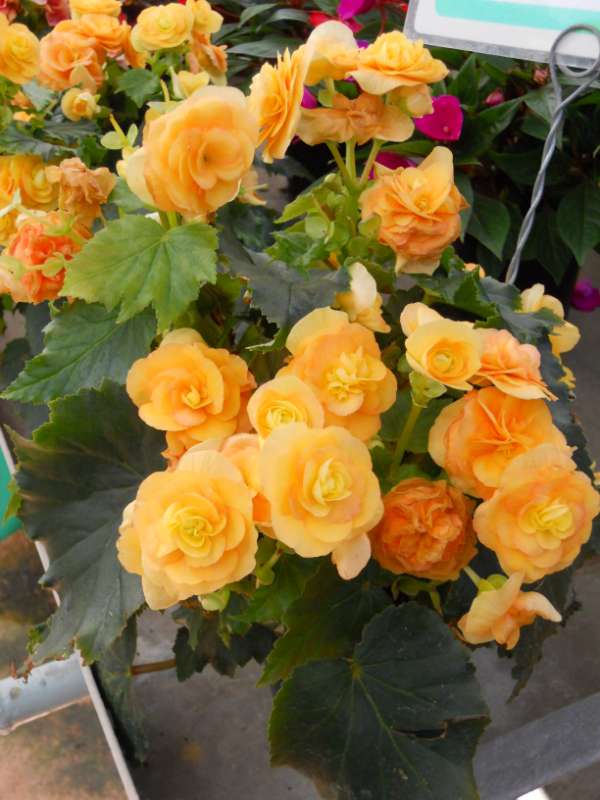

The air permeability of the soil is the key to the comfortable growth of begonia. You can prepare the planting mixture yourself. To do this, mix leaf, peat soil and humus in one part. Next, half of the sand is added to the composition.
It is important to regularly add groundbait to the soil. The mineral type of fertilizers is best suited for these purposes. They are used for flowering ornamental plants. Fertilizers need to be applied once a week. The amount of fertilizers should be reduced by 2 times compared to the dosage indicated on the package.
Reviews of begonia Elatior with photos
Valeria: “I recently bought the Elatior variety and I am very happy, the flower is really very beautiful. I bought it as an adult, but in a deplorable state - the plant was completely infected with a fungus. I thought I was not leaving it, but I was advised by Zircon. This tool is used to treat and prevent fungal and bacterial diseases. The photo shows my begonia a few months after I recovered. "
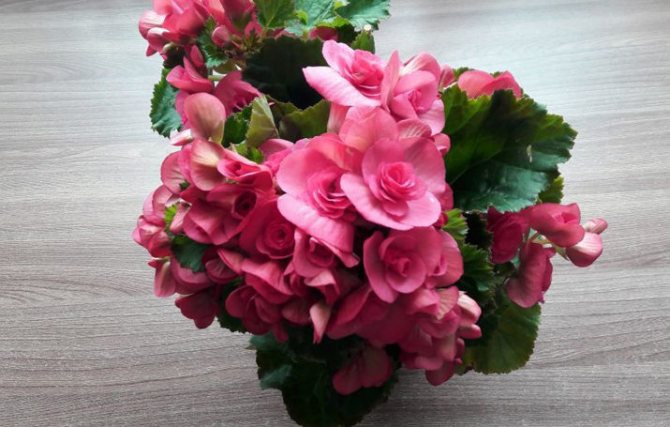

Begonia after recovery
Karina: “Before, I already had this kind of begonia, only when I went on a business trip, my husband did not finish it, and it dried up. But now I bought it again, and I am very happy. True, when I came home after the store, I noticed that it was too flooded and immediately put the pot on a napkin to remove excess moisture. In general, I am very pleased with the flower ”.
Begonia Elatior belongs to a common decorative hybrid species. The plant is quite whimsical to care for and requires a lot of attention and constant care.
Varietal variety
As you can see in the photo, begonia elatior (you need special care for this flower) is a very beautiful and delicate plant. A capricious beauty requires a careful attitude towards herself.
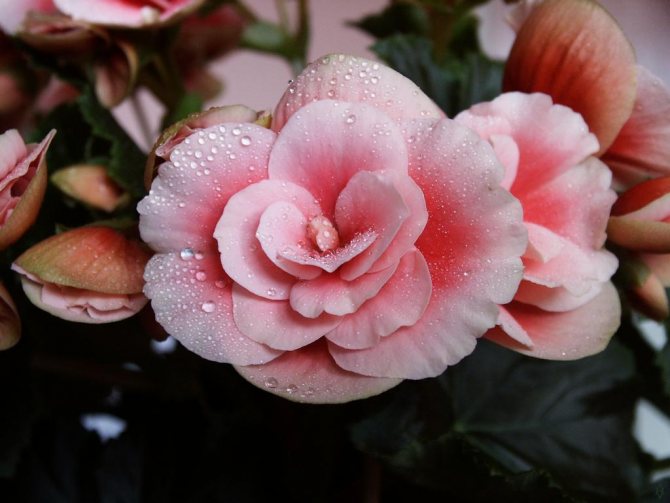

It does not tolerate significant disturbances in normal growing conditions. The varietal variety amazes with the brightness of the colors of the buds. There are low, medium and tall plants.
The Borias variety is very popular with florists. This hybrid is compact in shape. Flowers can be double or smooth. They are painted in two colors. Most often it is a light pink shade with a white border. This plant is rather picky to care for.
Another popular variety is Baladin. The flowers are bright red, pink or white. Differs in abundant flowering. It grows in height up to 30 cm. Flowers should not be touched by hands. This gives them ugly brown spots. Other popular varieties include Annabelle, Azotus, Bellona, Kyoto, etc.
Transfer
Begonia elatior at home requires quality care. She does not tolerate stress, adverse influences. For this reason, it cannot be transplanted. As soon as the plant fades, material is taken from it for further reproduction of the flower. The old begonia is left dormant for a while. You need to cut off all the cuttings. Hemp should remain about 5 cm high.
After some time, the plant will rest, gain strength after abundant flowering. It will throw out young shoots again. So the plant is completely rejuvenated. Because of this feature, some growers throw out begonia immediately after its flowering stops. However, this is fundamentally wrong. The plant feels quite normal after some rest.
In order for a young bush to acquire the desired shape, it can be pinched. This increases the decorative qualities of the flower. In the process of its development, dry leaves and buds must be removed immediately. Otherwise, they will take away the strength of the plant.
other methods
Elatior begonia can reproduce in other ways. Instead of a leaf, you can perform cuttings with a stem. This technique is similar to growing a flower from a leaf. Only in this case it will be necessary to cut the stem of the old plant about 7 cm long. The procedure must be performed quickly. For this, the soil and everything necessary is prepared in advance.
After cutting off the stem, it must be planted in moist soil. Next, perform the same actions as in the previous technique. Cut off the cuttings in early spring.
Rooting of a plant with a leaf in water is possible. Having cut off the planting material, you need to install it in a jar. In this case, you need to add an activated carbon tablet to the water. This is necessary for disinfection purposes.
Only one type of such plants is transplanted with seeds. It's called F1 Charisma. The rest of the plants have no seeds. They are hybrids. Therefore, they do not possess such planting material.
Types and varieties of plants, appearance
Begonia elatior is a hybrid flower that is obtained by crossing the Socotran begonia and the tuberous begonia. It is a very beautiful plant with bright flowers. They stand out noticeably against the background of green leaves and thereby attract everyone with their spectacular appearance. Blooming begonia is often presented for the holidays, as this flower in a pot really amazes with its appearance and beauty.
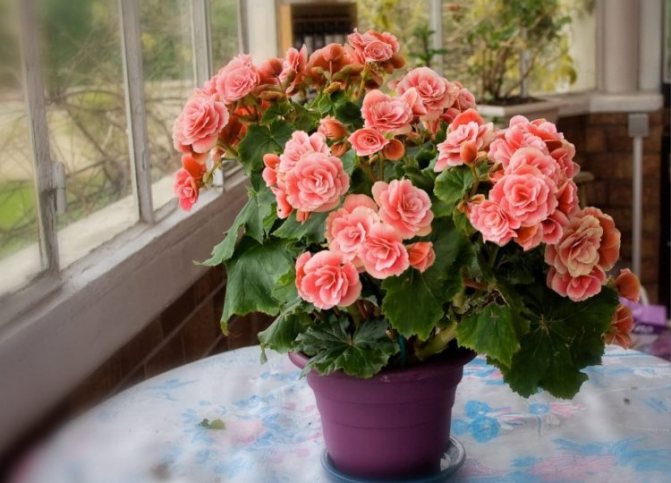

There are such varieties of elatior begonia as baladin begonia, white begonia, red begonia, sevica begonia, borias begonia and dragon begonia. Such a hybrid begonia gets along well in indoor conditions, but at the same time it needs to be looked after very carefully, especially for subspecies that have appeared quite recently. For flowering begonias, the most correct conditions are needed, and then they will bloom not only in summer, but also at other times of the year.

